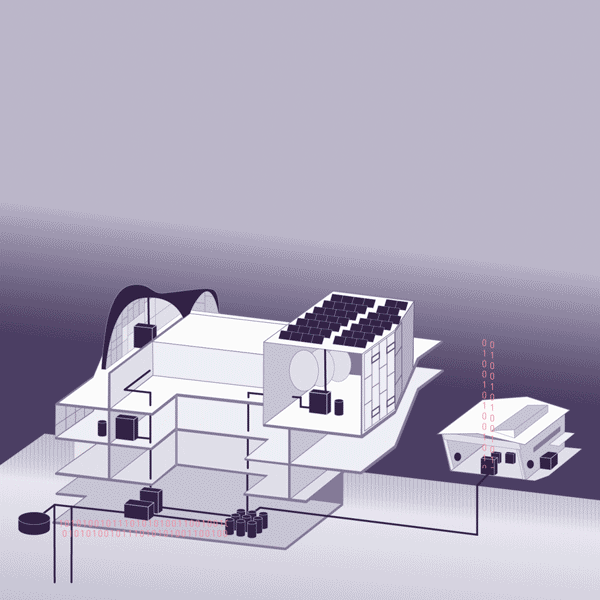This is ehub
The seamless integration of renewable energy sources, efficient storage possibilities and a dynamic interplay between a wide range of technologies are pivotal for a sustainable energy future. ehub, Empa’s Energy Hub demonstrator, combines a large number of technologies for the production, conversion, transportation and storage of energy. Its aim is to optimize the energy management from component up to district level.
Demonstrators
By integrating the two demonstrators NEST and move, ehub offers research and industry partners a platform for answering their energy questions. For that purpose, they can use both ehub's infrastructure and data.
NEST
NEST is structured as a vertical neighbourhood, where new energy concepts can be validated up to district level. NEST consists of units, which represent energy-producing and –consuming buildings, and a backbone that hosts the units, storage and conversion technologies as well as the distribution grids for electrical, thermal and gas based energy.
move
move, the demonstrator for future mobility, displays different possibilities for using renewable electricity for mobility in the form of hydrogen, synthetic methane and grid batteries. Here, research on the production and supply of fuels for fuel cell vehicles, gas vehicles and battery-powered vehicles is conducted.
The move demonstrator, as well as each of the installed units and the backbone of NEST are composed of distinct technologies. These parts of the district run independently, comparable to a regular district. However, the ehub platform also allows for a coordinated operation – if desired. The platform thus enables partners to study tailor-made technology combinations and different modes of operation. On top of that, it is possible to implement and test use cases and scenarios under real-world conditions. Please find further information about the ehub platform here.

Components
ehub comprises a variety of grids and components:
- Three thermal networks
- Three electrical networks
- Two gas networks


































